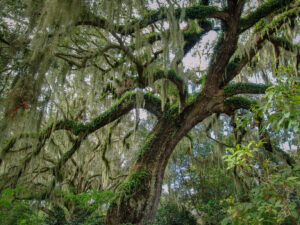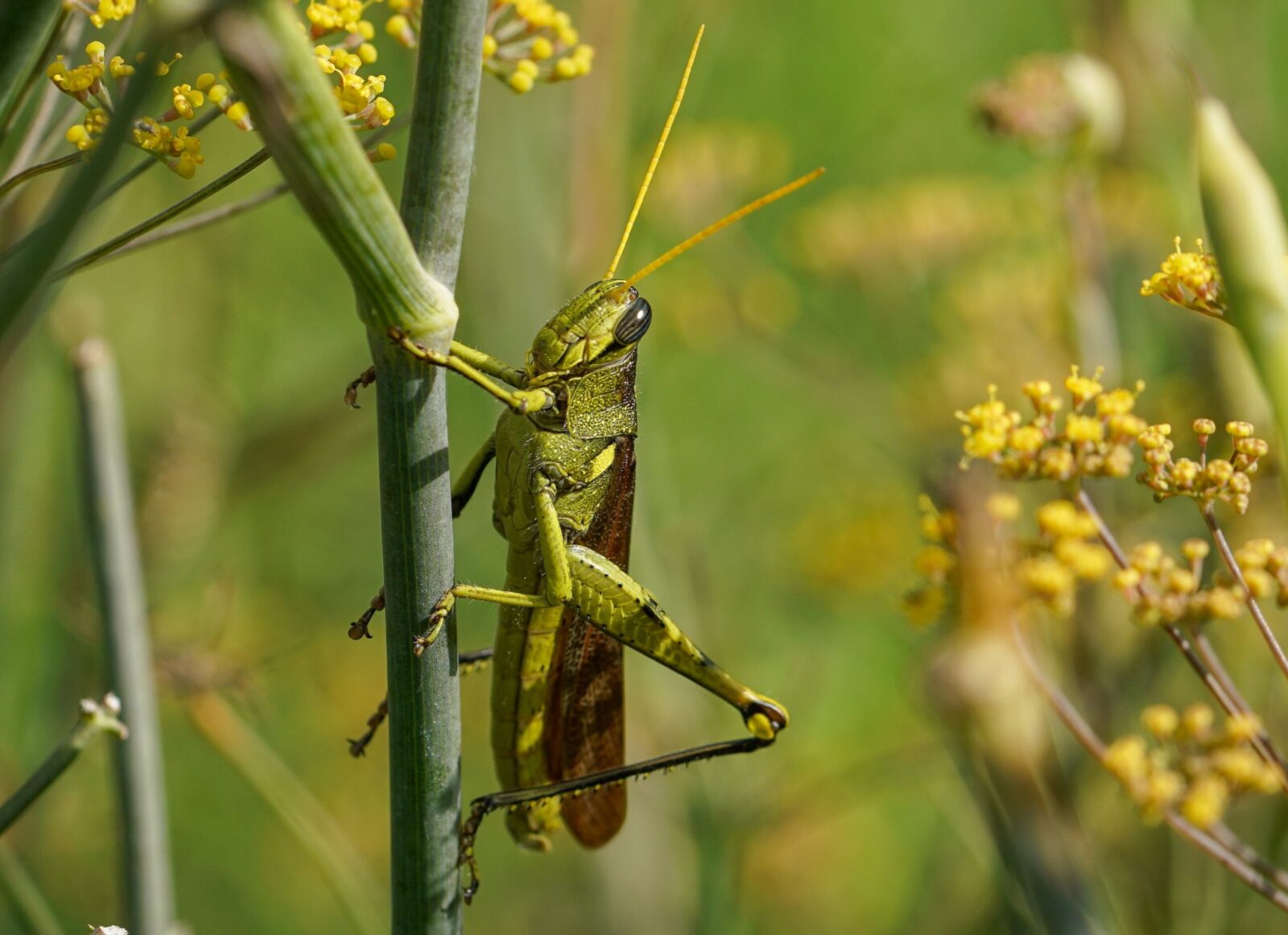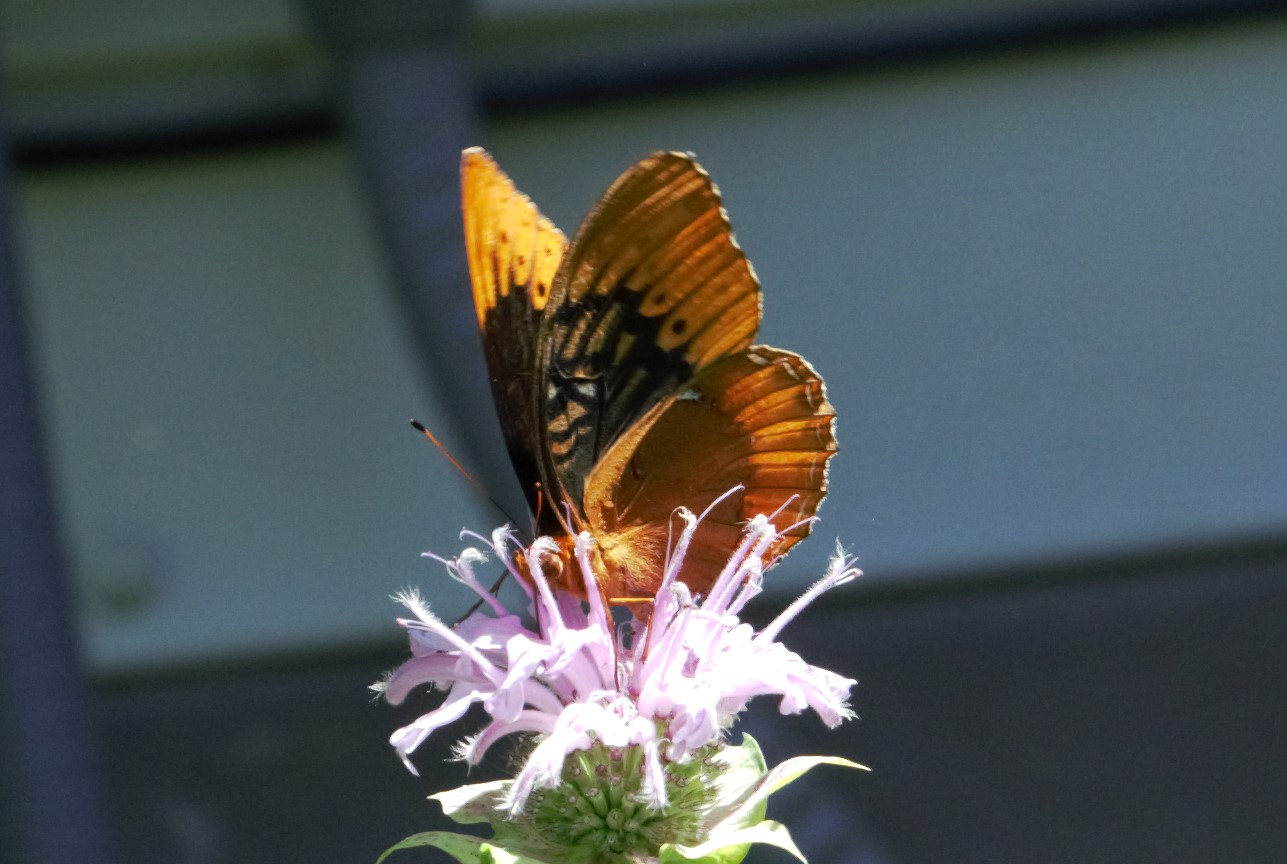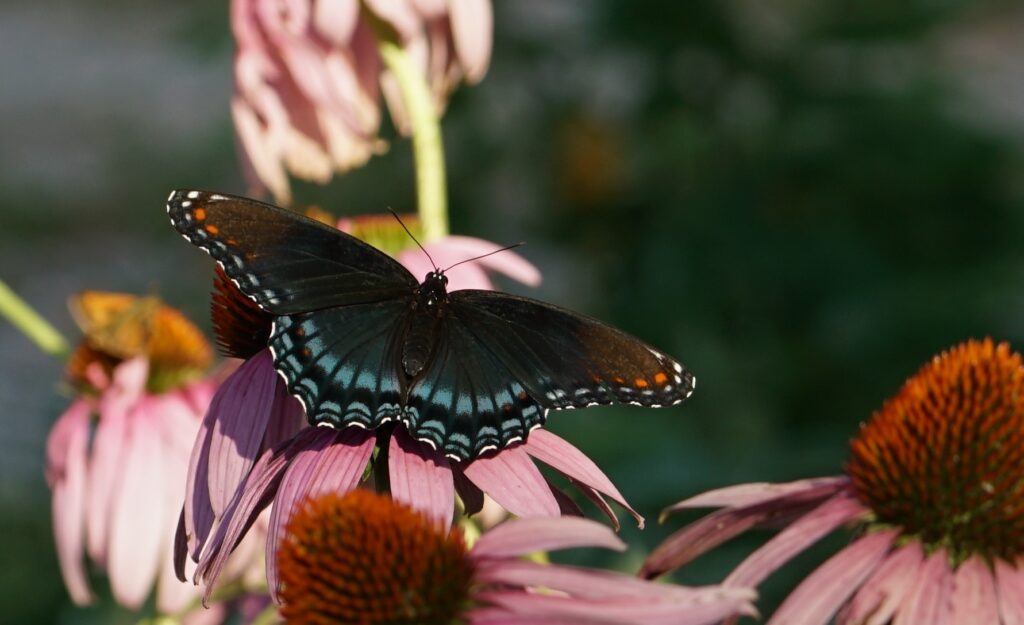Gardening with native plants is a rewarding way to support local wildlife, especially our beloved butterflies and moths. Many native North American trees serve as essential host plants, providing food and habitat for caterpillars, which later transform into the stunning winged adults we admire. Integrating these trees into your wildlife garden not only enhances its beauty but also fosters biodiversity. Here are some top choices for native trees that cater to butterflies and moths.
1. Oak Trees
I’m going to cheat with my number one tree, and make it an entire genus of trees: oaks (Quercus). According to entomologist Doug Tallamy, “Over 900 species of lepidoptera—and most of them are moths—use oaks and there’s no other genus that comes close to that. The reason that’s important is that caterpillars are transferring more energy from plants to other animals than any other type of plant eater.” For example, most songbirds feed their young caterpillars. Without caterpillars, we wouldn’t have those songbirds.
Oaks are majestic trees that can live for centuries, offering substantial ecological benefits. Some of the beauties that use oaks as host plants include Luna Moths, Polyphemus Moth, Io Moths, and Red-banded Hairstreaks.
2. Tulip Tree (Liriodendron tulipifera)
The Tulip Tree, also known as the Yellow Poplar, is a striking tree with tulip-shaped flowers. It is a host plant for the Eastern Tiger Swallowtail (Papilio glaucus) and the Tuliptree Silkmoth (Callosamia angulifera), to name two. These trees can grow quite tall, making them excellent shade trees that also contribute significantly to the ecosystem by supporting a variety of pollinators.
3. Black Cherry (Prunus serotina)
Black Cherry trees are not only beautiful but also highly beneficial to wildlife. The small, dark berries that the tree produces are a vital food source for birds. Plus, they serve as host plants for over 400 moths and butterflies, including:
- Coral and Striped Hairstreaks
- Eastern Tiger Swallowtails
- Cherry Gall Azures
- Viceroys
- Small-eyed Sphinx Moths
- Wild Cherry Sphinx Moths
- Red-spotted purples
4. Eastern Redbud (Cercis canadensis)
The Eastern Redbud is a small, ornamental tree that bursts into beautiful pink blooms in early spring. It’s a host plant for the Henry’s Elfin butterfly. This butterfly lays its eggs on the tree, and the emerging caterpillars feed on its leaves. Beyond supporting butterflies, the Redbud’s early blossoms provide nectar for bees and other pollinators.
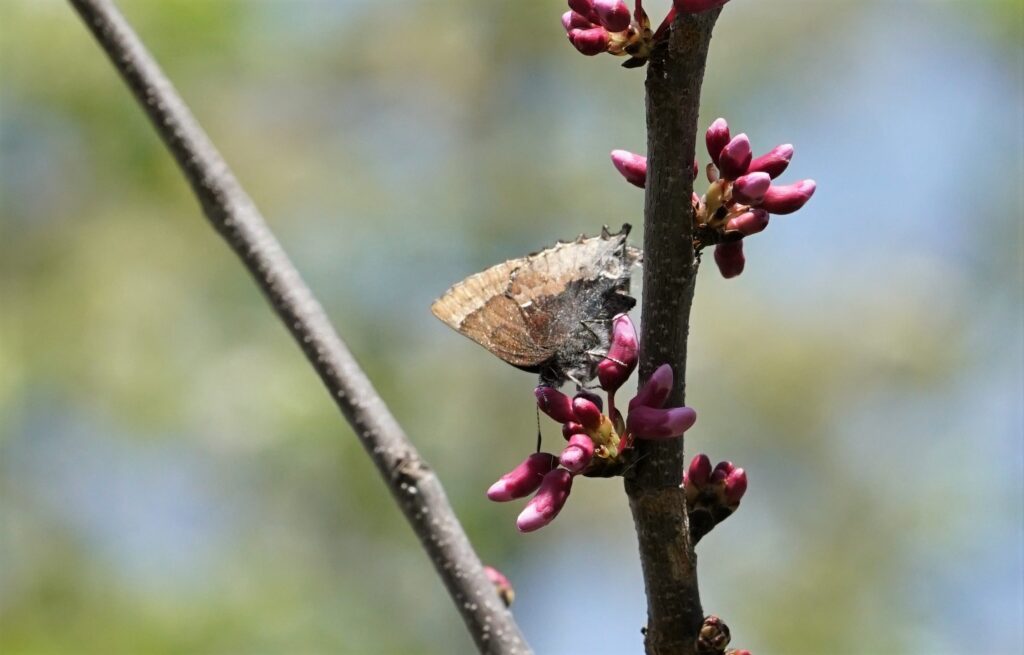
A Henry’s Elfin butterfly on a Redbud.
5. American Plum (Prunus americana)
The American Plum is a small tree that produces fragrant white flowers in spring and edible plums in late summer. It is a host plant for several lepidoptera, including the Coral Hairstreak, Red-Spotted Purple, Eastern Tiger Swallowtail, and the Viceroy. This tree’s dense foliage provides excellent cover for birds and other wildlife, making it a multi-functional addition to your garden.
6. Willow (Salix spp.)
Various species of willow trees are crucial host plants for several butterfly and moth species, including the Mourning Cloak butterfly (Nymphalis antiopa) and the Eastern Tiger Swallowtail. Io and cecropia moths also use willows as host plants. Willows are often found near water, and their leaves are a primary food source for caterpillars. Additionally, their catkins are early spring sources of nectar and pollen for bees.
7. Hackberry (Celtis occidentalis)
Hackberry trees may not be the most well-known, but they are vital to the lifecycle of the Hackberry Emperor (Asterocampa celtis) and the Tawny Emperor (Asterocampa clyton). These trees thrive in a variety of soils and are highly adaptable, making them an excellent choice for diverse gardening conditions.
8. Cottonwood (Populus deltoides)
